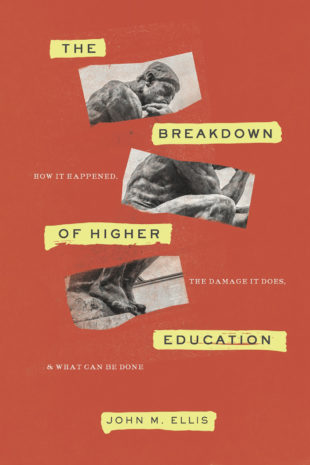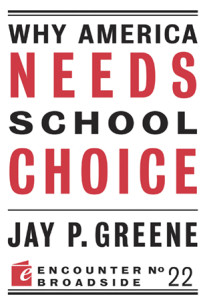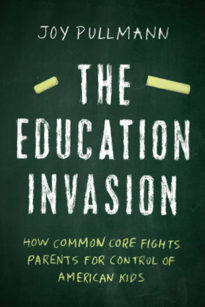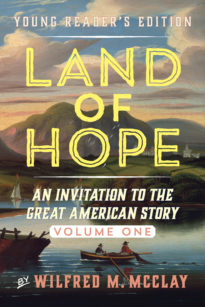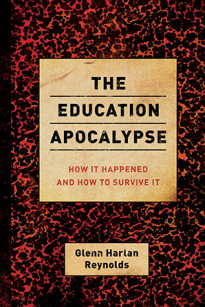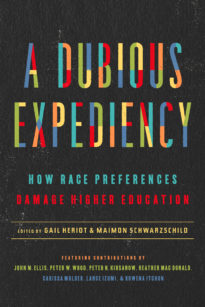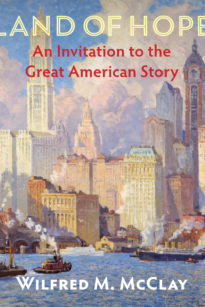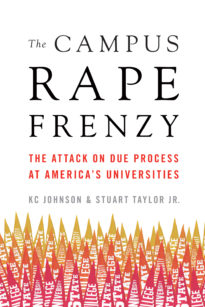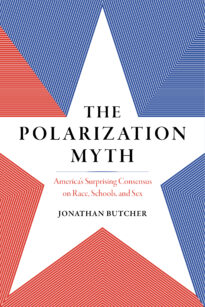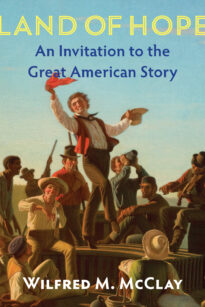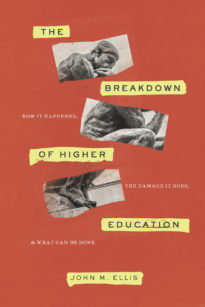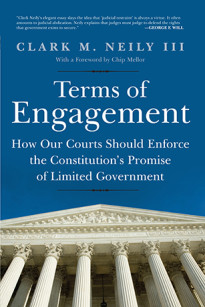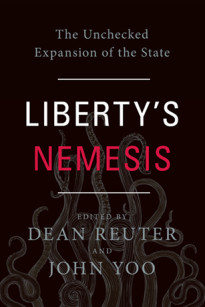The public’s already declining confidence in academia has recently been jolted by a series of violent campus events, some of which could legitimately be called riots. Student mobs have prevented invited guests from speaking on campuses such as UC Berkeley, UCLA, and Middlebury College. On other campuses, faculty members have been subjected to harassment campaigns for expressing opinions contrary to the reigning orthodoxy. The denial of free speech in campus public spaces has become widely known, but while it is certainly an important issue, it doesn’t get to the heart of what has been happening to our campuses. In this chapter I want to go deeper into these events to examine what they really tell us about the state of higher education.
The assault on free expression in the public sphere is best regarded as a relatively superficial symptom of much larger problems that need to be understood and dealt with before we will ever be able to restore genuine respect for freedom of speech on the campuses. If tomorrow every campus in the nation were to start ensuring that visiting speakers are never again shouted down, the underlying sickness of higher education would remain untouched. We cannot understand the nature of the sickness until we ask: Why is free speech constantly under threat on the campuses? Why do shout-downs and near-riots now occur with such regularity? These questions lead to the broader subject of how higher education has been so thoroughly corrupted and diverted from its real purpose.
This nation’s major universities have always had much prestige, which is another way of saying that the public stood in awe of them. A Harvard University degree always transferred some of that institution’s prestige to the student who earned it, but during the last three decades the prestige of colleges and universities has been declining. People have become increasingly skeptical about them—all of them, not just the minor ones. A steady drip of stories about grade inflation, political correctness, identity politics, political advocacy in the classroom, trivialization of the curriculum, kangaroo courts, a dearth of classes that educate for citizenship—and much more besides—has diminished the respect that universities enjoy. Now the much-publicized shouting down of visiting speakers has dramatically accelerated the decay in the standing of academia.
Harassment of visiting speakers on campus is not really new in itself: for many years now, hecklers have been disrupting lectures by conservative guests. What has changed is that the disrupters’ behavior has become more determined, more spiteful, and more indiscriminate. Only recently have we seen a violent mob absolutely set on preventing a scheduled lecture from taking place, and willing to use physical threats and assault to make sure of that.
The threat of violence is of course not just about canceling a particular speech. The aim is to intimidate and discourage future speakers too, so that certain kinds of ideas will never be heard on campus. And these threats have been quite successful: campus administrations have often used the likelihood of violence as a reason for canceling a lecture. In so doing, they have been willing to reward mobs who threaten violence by giving them what they want preemptively. It’s easy to understand why violent mob action would be effective in causing vulnerable small-business owners to capitulate, but much harder to understand why university presidents would cave to extortion by their own faculty and students.
The series of events that have riveted the public’s attention began on February 1, 2017, with a riot on the Berkeley campus of the University of California on the occasion of a planned speech by Milo Yiannopoulos, a gay conservative. Fires were set and buildings damaged ahead of the planned talk, which was then canceled. While that event was fresh in everyone’s mind, another at Middlebury College on March 2 raised public awareness of politically inspired violence on campus still more: the distinguished sociologist Charles Murray and a Middlebury College professor, Alison Stanger, were physically attacked as they left the lecture hall at the end of Murray’s talk, which protesters had tried unsuccessfully to stop by making as much noise outside the building as they could. Stanger was injured and had to be hospitalized. The mob didn’t stop there: they pursued Murray after he had left campus to go to a dinner with friends. Then, on April 5, Heather Mac Donald was shouted down at UCLA after she had finished only half of her planned talk, and the next day her talk at Claremont McKenna College was effectively canceled by another menacing crowd. In May, Evergreen State College descended into complete chaos after a group of black students had announced that whites should all leave campus for a day, and Professor Bret Weinstein objected to this attempt to discriminate by race. Both students and faculty harassed him so viciously that he and his wife were in effect hounded into retiring from their faculty positions.
By this time, the public was paying attention to campus thuggery as never before, and anxiety about it was growing. In the past, heightened public attention had often been enough to make campus radicals stop what they were doing, but now it was different: these lamentable events actually became more and more frequent. Later that year, Stanley Kurtz summarized what happened next:
The spring semester of 2017 will long be known for popularizing this fearsome technique of speech suppression. Remarkably, however, as we approach the halfway mark of the Fall 2017 semester, the rate of shout-downs is now nearly quadruple that of last spring. I count 19 shout-downs so far this year. At the current rate, that would make for 38 fall-semester shout-downs. This would nearly quadruple the 10 shout-downs of last spring, a semester already infamous for speaker disruptions.
What then do these events say about the overall health of college campuses? The most important issue that emerges in every one of them is the way in which the academy now deals with political ideas. The traditional academy specialized in analyzing them: it examined the pros and cons, the strengths and weaknesses of any idea, and looked into what the historical record showed of the opportunities and dangers it held. But what these recent campus episodes demonstrate is that advocacy has now replaced analysis as the central concern of the campuses. And not just advocacy, or spirited advocacy. Campus political advocacy is more than passionate. It is ferocious. It has no time for quibbles about pros and cons of different viewpoints, but aims to stamp out all opposition to a campus orthodoxy. It is completely closed-minded and intolerant, and vicious toward those who disagree.
